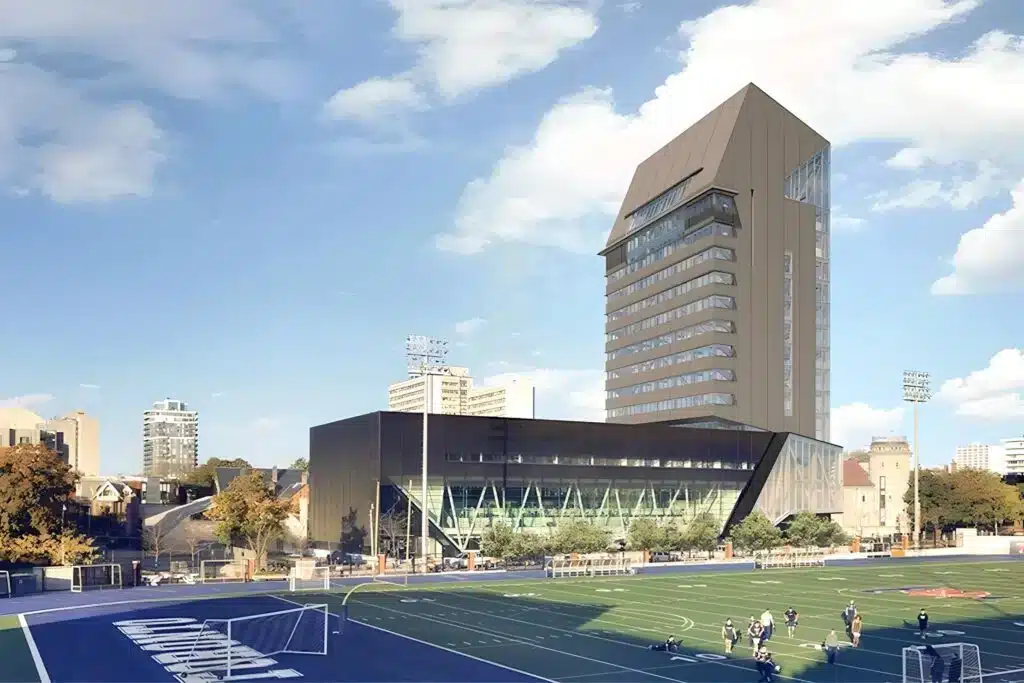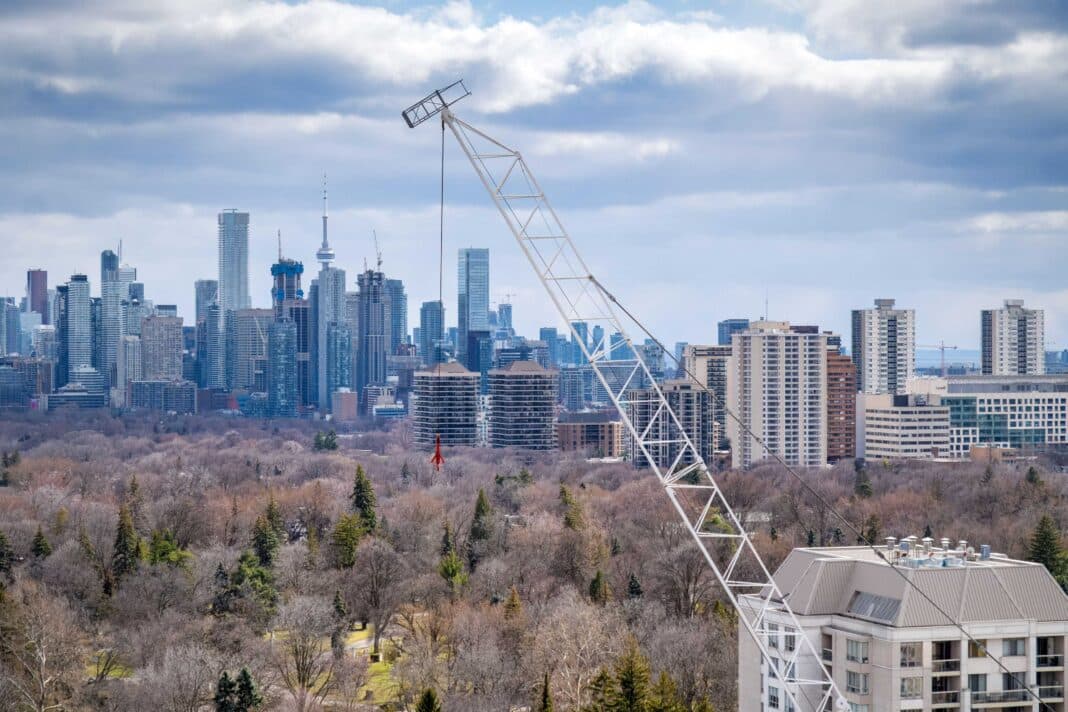Toronto will soon allow encapsulated mass timber buildings to rise to 18 storeys after Ontario, like British Columbia, greenlit changes to its Building Code.
Announced yesterday, Ontario’s Building Code will increase the allowable Encapsulated Mass Timber Construction by 50% from 12 storeys over the next few months to address the province’s housing shortage. Encapsulated buildings mean timber components are covered with fire-rated treatments, like drywall.
In January, Ontario joined British Columbia and Quebec—home to Canada’s four most built-up cities—in trialling changes to the code. The feedback will now be analysed by a multi-province Joint Task Group, which will share a report of these findings that will be used to implement this change.
According to Paul Calandra, the province’s Minister of Municipal Affairs and Housing, “The use of mass timber can help the sector build more homes faster, keep the cost of construction down and boost our northern economy.”

It comes after Prime Minister Justin Trudeau announced on Friday that more than $600m would be invested into mass timber, prefab manufacturing, panelisation, 3D printing, and pre-approved housing designs to create ‘QuickBuilds’ using modern technology.
“We’re changing the way we build homes in Canada,” Prime Minister Trudeau said, adding, “as a country, we need to build homes smarter, faster and at prices Canadians can afford.”
Minister Calandra said the new changes to the code will help “cut red tape to increase housing supply,” with the province “taking an innovative approach to help our partners get shovels in the ground.”
For Rod Flack, Ontario’s Associate Minister for Housing, “mass timber and modular construction are part of our multi-pronged approach to boost housing supply and make homes more affordable.” With the new code, “unlocking the potential of high-speed homebuilding technologies to create sustainable communities for everyone,” he said.
According to a statement by the Ontario provincial government, mass timber construction has been proven to offer quieter and faster construction with the same fire and structural protection as other building methods – with mid-rise and high-rise construction a crucial part of Ontario’s Forest Sector Strategy.
Ontario Forest Industries Association President and CEO Ian Dunn has welcomed the changes. Adding that: “This move will not only accelerate home construction and reduce costs but also support forestry, technology, engineering, and manufacturing sectors.”
The province is home to abundant natural resources, with a highly skilled forestry sector on hand to meet the demand for housing across the province, according to Graydon Smith, the province’s Minister of Natural Resources and Forestry.
“Advanced wood construction will help bring long-term investments to northern communities, creating new, good-paying jobs while increasing housing supply and supporting Ontario’s largest renewable natural resource sector,” he said.
Wood Central understands the changes apply to all residential, commercial and institutional buildings in the province, including Toronto, Canada’s most densely populated city, which ranks fourth in the world and first in North America for the number of skyscrapers under construction.

In January, Wood Central reported that the University of Toronto’s new 14-storey mass timber building is “shovel ready” and, once completed, will be among the tallest mass timber buildings in North America.
Known as the “Academic Wood Tower,” the award-winning build is the work of Toronta-based Patkau Architects and MJMA Architecture & Design. Blackwell Structural Engineers and Smith+Andersen also provided consulting.
According to University President Meric Gertler, “The inspiring piece of architecture will stand as a testament to the university’s global leadership in sustainability and our commitment to city-building.”







